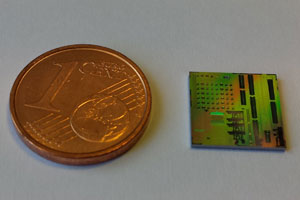A globe-spanning network for the Internet of Things (IoT) has been built over the past 20 years that provides the coverage, security and reliability needed to connect us and bring intelligence to the things that surround us.
Cellular networks already cover 90% of the world’s population, but even with the networks in place, a number of roadblocks to supporting mass-market adoption of IoT have remained. That’s why Ericsson (NASDAQ: ERIC) is addressing these challenges with a targeted new suite of software upgrades and ecosystem advances that will accelerate the uptake of IoT for the benefit of both industry and consumers.
Alain Maloberti, senior vice president, Orange Labs Networks, Orange, says: “The Internet of Things has so much potential. We are committed to working with key IoT companies to support innovations that enhance the day-to-day lives of our consumer and business customers. We are really pleased to see Ericsson working with leading ecosystem players to address the cost, coverage and battery life issues that have hindered broader mass uptake of IoT applications. We see that the best is yet to come.”
Park Jin-hyo, senior vice president and head of Network R&D Center, SK Telecom, says: “Our ambition is to set the pace for mobile networks, so we are already proactively building toward 5G technology, which will include an evolution of today’s LTE and innovations driven by new IoT use cases. Connectivity underlies everything we do and Ericsson’s latest innovations enhance both networks and devices so that we can develop new IoT opportunities in Korea. This is sure to accelerate uptake of IoT and allow us to quickly reach our customers with useful IoT services.”
There are already more than 230 million cellular machine-to-machine (M2M) subscriptions for IoT devices, but certain challenges have limited the potential for large-scale adoption across a variety of use cases, namely: the cost of IoT devices, device battery life, and cellular coverage in both remote areas and deep inside buildings.
Matt Hatton, founder & CEO, Machina Research, says: “For IoT to truly erupt, standardisation is vital and interoperability is key. By working with big names like Intel and other IoT ecosystem players like Altair, Sequans and Telit, Ericsson is ensuring that opportunities for efficiencies are not missed and that the device and network ecosystem develop in synch.”
Working with its ecosystem partners, advances in Ericsson’s new IoT Networks Software 16B delivers:
Reduced IoT device cost – The new software supports LTE Category 0 with half-duplex operation in FDD, which effectively limits functionality and capability to those specifically required for IoT applications, such as large-scale sensor and smart meter deployments. This reduced complexity cuts device cost by 60 percent compared to Category 4.
Extended battery life – 10-year battery life is one of the goals for 5G and Ericsson is introducing two new software upgrades for energy efficiency that achieve that goal on today’s IoT devices.
Device Power-saving Mode for LTE & GSM is a new device power-saving capability that introduces a deep sleep state, while Extended Discontinuous Reception (DRX) for GSM extends the sleep cycles in inactive mode.
Improved indoor coverage – Extended coverage software for GSM delivers a 20 dB improvement leading to a seven-fold extension in the range of low-rate applications. This enables the usage of IoT applications in remote locations and deep within buildings underground.
Ken Stewart, chief wireless technologist and fellow, Intel Corporation, says: “Connectivity is critical to mass adoption of new IoT applications for smart cities and industries. Intel is helping clear the path for IoT’s rapid growth through its research and development of cutting-edge new technologies, and by working closely with ecosystem partners. We are pleased to collaborate with Ericsson to jointly drive standards adoption of solutions that can be used immediately on existing operator networks.”
An additional capability included in this software release is the enablement of service prioritisation to optimise network resources while addressing the diversity of IoT use cases. As more IoT devices connect to the network, it is important that they and the services they provide can be prioritised, especially during times of heavy traffic.
IoT QoS Admission Control for GSM enables the prioritisation of devices trying to access the network, such as giving medical equipment priority over a utility meter, and it can even disconnect low-priority devices temporarily to mitigate any capacity limitations. This functionality is already supported in LTE.
Arun Bansal, SVP and head of Business Unit Radio, Ericsson, says: “We are accelerating IoT growth on existing LTE and GSM networks to ensure a global foundation for a vast range of new consumer, industry and government applications, from Smart Cities to connected farms.
“With our leading national and multi-national operator customers, like SK Telecom and Orange, and ecosystem partners like Intel, we are co-creating end-to-end IoT network and device solutions that harness the power of reliable, globally scalable, standards-based systems and services. These innovations put our mobile operator customers solidly on the road to 5G.”
Gartner predicts that IoT will provide a US$1.9 trillion increase in value across sectors in 2020. Ericsson plays a role in all levels of IoT transformation, from rollout to enterprise and business processes, platforms and cloud and radio connectivity.
A vibrant ecosystem that spans devices, services and the network is the key to success for IoT mass market adoption. Ericsson, together with leading ecosystem players, is driving key functionality for standardisation and helping to bring IoT devices to the market faster by interoperability testing (IoDT). Ericsson and key device ecosystem partners will showcase IoT solutions enabled by Ericsson’s new software upgrades at Ericsson Booth #4322 at CTIA Super Mobility 2015 in Las Vegas, from September 9 to 11. The demonstrations include:
- Extended coverage for GSM, in partnership with Intel
- Extended battery life with Power Saving Mode on a commercial LTE chipset/module, in partnership with Altair and Telit
LTE Category 0 prototype with Half Duplex support for low cost device, in partnership with Sequans.










